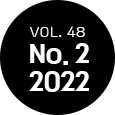학회지 리뷰

Korean Journal of Microbiology (2022) Vol. 58, No. 3, pp. 127-135
DOI https://doi.org/10.7845/kjm.2022.2052
Alleviation of Pseudomonas aeruginosa infection by LasA propeptide
Tae-Hyeon Kim, Xi-Hui Li, and Joon-Hee Lee*
Department of Pharmacy, College of Pharmacy, Pusan National University, Busan 46241, Republic of Korea
DOI https://doi.org/10.7845/kjm.2022.2052
Alleviation of Pseudomonas aeruginosa infection by LasA propeptide
Tae-Hyeon Kim, Xi-Hui Li, and Joon-Hee Lee*
Department of Pharmacy, College of Pharmacy, Pusan National University, Busan 46241, Republic of Korea
Pseudomonas aeruginosa, an opportunistic human pathogen, expresses LasA (elastase A) for infection as an important virulence factor. Since the LasA activity can be inhibited by its propeptide, we tried to alleviate the severity of P. aeruginosa infection using the purified LasA propeptide (LasApp). The purified LasApp efficiently inhibited LasA in vitro. The effectiveness of LasApp in alleviating the P. aeruginosa infection was investigated using mouse skin infection and acute lung infection models. The LasApp treatment of P. aeruginosa alleviated severity of P. aeruginosa infection to some extent in both models of the skin and acute lung infections, and the PIVpp itself caused no harmful effect on host tissues. However, since the degree to which LasApp alleviated the infection was very small compared to that expected from the degree to which LasApp inhibited the activity of purified LasA in vitro, we investigated how much LasA activity was inhibited when live P. aeruginosa cells were treated with LasApp. As a result, LasA activity was inhibited only to a very small extent compared to the in vitro result with the purified LasA. This demonstrates that when LasApp is directly applied to live P. aeruginosa cells, LasApp does not sufficiently inhibit the activity of LasA, and thus the effect of alleviating severity of infection is limited.

Korean Journal of Microbiology (2022) Vol. 58, No. 4
DOI https://doi.org/10.7845/kjm.2022.2066
Nisaea acidiphila sp. nov., isolated from a marine algal debris, emended description of the genus Nisaea Urios et al. 2008, and the emendation of Thalassobaculum salexigens as Thalassobaculum litoreum subsp. salexigens comb. nov.
Kae Kyoung Kwon1,2* , Ji-Hye Oh1#, Sung-Hyun Yang1, Mi-Jeong Park1, and Yeonju Lee1,2
1Marine Biotechnology Research Center, Korea Institute of Ocean Science and Technology, Busan 49111, Republic of Korea
2Major of Marine Technology and Convergence Engineering, KIOST School, KIOST School, University of Science and Technology, Daejeon 34113, Republic of Korea
#Present address: Gyeongin Regional Office of Food and Drug Safety, Gwacheon 13809, Republic of Korea
DOI https://doi.org/10.7845/kjm.2022.2066
Nisaea acidiphila sp. nov., isolated from a marine algal debris, emended description of the genus Nisaea Urios et al. 2008, and the emendation of Thalassobaculum salexigens as Thalassobaculum litoreum subsp. salexigens comb. nov.
Kae Kyoung Kwon1,2* , Ji-Hye Oh1#, Sung-Hyun Yang1, Mi-Jeong Park1, and Yeonju Lee1,2
1Marine Biotechnology Research Center, Korea Institute of Ocean Science and Technology, Busan 49111, Republic of Korea
2Major of Marine Technology and Convergence Engineering, KIOST School, KIOST School, University of Science and Technology, Daejeon 34113, Republic of Korea
#Present address: Gyeongin Regional Office of Food and Drug Safety, Gwacheon 13809, Republic of Korea
A Gram-negative, facultatively anaerobic, rod-shaped (1.4 ±0.46 μm × 0.53 ± 0.17 μm) and motile marine bacterium designated as MEBiC11861T was isolated from a marine algal debris collected from Kosrae, Federation State of Micronesia (162°57’23.1"E, 5°21’13.0"N). Based on the 16S rRNA gene sequence analysis strain MEBiC11861T identified as a novel species in the genus Nisaea, it showed high similarity to members of the genus Nisaea (97.0–98.4%). Strain MEBiC11861T was growing at 10–42℃ (optimum 26–29℃), at pH 4.0–8.5 (optimum pH 5.0) and with 0–10% (optimum 0.5%) NaCl. The C12:0 (5.6%), C16:0 (29.0%), C12:0 3-OH (4.3%), summed feature 3 (C16:1 ω7c and/or C16:1 ω6c; 9.9%), summed feature 8 (C18:1 ω7c and/or C18:1 ω6c; 31.2%), and C19:0 cyclo ω8c (10.6%) were determined to be as predominant cellular fatty acids. The DNA G + C content is 63.0 mol%. The major respiratory quinone is Q-10. Several phenotypic characteristics such as utilization of gluconate, malate, adipate, arabinose etc., DNA G + C ratio, cellular fatty acids composition, and growth range of pH and salinity differentiate strain MEBiC11861T from members of the genus Nisaea. On the basis of this polyphasic taxonomic data, strain MEBiC11861T should be classified as a novel species in the genus Nisaea and it is proposed as Nisaea acidiphila sp. nov. The type strain is MEBiC11861T (= KCCM 43219T = JCM 31589T). Emended description of the genus Nisaea Urios et al. 2008 and emendation of halassobaculum salexigens were also given.




